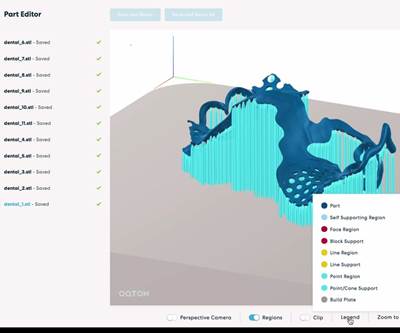Maintaining Balance Writing about Modern Machining, Manufacturing
There is a method to our madness when it comes to determining what articles to present to our readers.
Share



Choosing what topics to write about for Modern Machine Shop is all about maintaining balance.
One reason is that MMS is a horizontal brand, not a vertical one. That means we have to cover a range (rather than a small niche) of machining technology, equipment and processes that shops might apply to grow their businesses and become more efficient, capable and profitable. To ensure we present such a well-balanced smorgasbord of stories, we create a yearly editorial calendar that identifies specific topics we must cover in each month’s print issue. This discipline keeps us from writing about the same few concepts over and over, and it enables us to bring fresh ideas to your attention that could help your operation. In this way, our magazine continues to be a means for discovery, spurring you to research topics you learned about that piqued your interest.
The other part of our balancing act is presenting the right mix of articles that introduce leading-edge, possibly unfamiliar technology as well as those that highlight the real-world application of new or known machining equipment and strategies. Both kinds of stories are designed to help you improve your manufacturing business, whether it is something you can implement now or consider for the future.
Let’s first consider the former type of article. I believe I was the first MMS editor to write about the promise of additive manufacturing/3D printing in a production (not prototyping) sense back in 2011. That article described a manufacturer’s experimental efforts printing contoured, high-temperature-polymer aircraft duct components. Was it an interesting story to research and write? Absolutely. Was I a smidgen uncomfortable that it was a cover story? Absolutely.
I certainly thought readers would find the story intriguing. At the same time, I secretly wondered if this technology would ever be something that they would, at some point, leverage to their advantage in a tangible, beneficial way. After all, the company I profiled was not actually using it in a proven production process or in some way outside of prototyping.
But flash-forward to today. Recent MMS issues have described machine shops benefiting from 3D printing beyond prototyping by creating fixturing, robot end effectors, parts trays and other shopfloor widgets. In fact, this story describes a shop that 3D prints plastic workpiece fixtures rather than having its toolroom produce them out of metal.
That’s why I had to check myself when I noticed how often the promise of artificial intelligence (AI) was mentioned in our June issue without citing real-world examples of it being applied in an actual shop. Our cover story describes a company’s efforts combining AI with sensor technology to enable industrial robots and humans to interact collaboratively on the shop floor sans protective fencing. Another story describes how AI is being used to predict when a machine tool’s spindle will start to fail, while still another explains how AI facial recognition technology can ensure only certain operators are permitted access to a machine’s CNC.
AI is an example of new technology we have recently come across in our travels, technology that is likely coming to a shop near you (or to yours) at some point. Who knows, maybe one day we’ll describe how your shop is applying AI in a way that you learned about here.
Still, I wonder. What other new technology will we be bringing to your attention in the years to come? Time will tell.
Related Content
Can ChatGPT Create Usable G-Code Programs?
Since its debut in late 2022, ChatGPT has been used in many situations, from writing stories to writing code, including G-code. But is it useful to shops? We asked a CAM expert for his thoughts.
Read MoreSolidCAM iMachining and Technology Wizard: Faster Machining and Longer Tool Life
Smarter toolpaths to tackle modern machining challenges.
Read MoreThe Smarter Way to Take Full Control of Your CNC Machine Shop
Designed to bridge the gap between CAM programmers and shop floor operators, SolidShop provides a seamless, real-time solution for managing G-code, tracking production and eliminating costly mistakes.
Read MoreCutting Part Programming Times Through AI
CAM Assist cuts repetition from part programming — early users say it cuts tribal knowledge and could be a useful tool for training new programmers.
Read MoreRead Next
AI Makes Shop Networks Count
AI assistance in drawing insights from data could help CNC machine shops and additive manufacturing operations move beyond machine monitoring.
Read More
















.png;maxWidth=300;quality=90)









